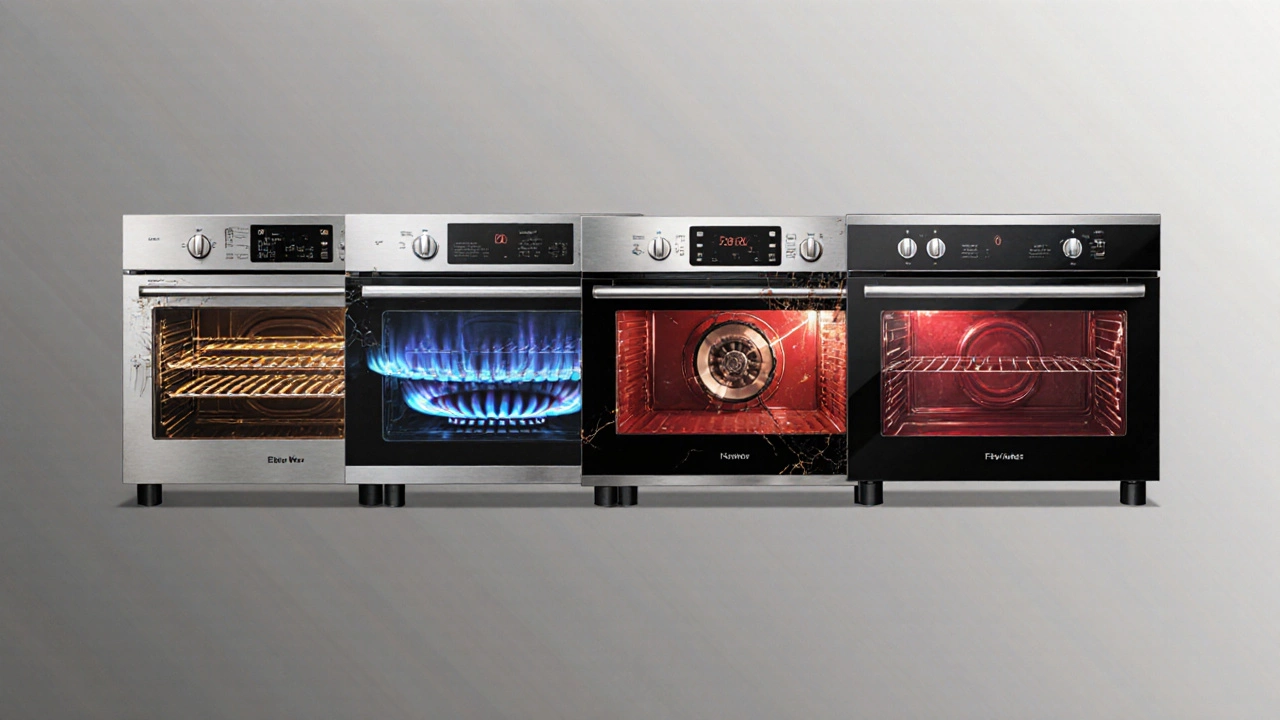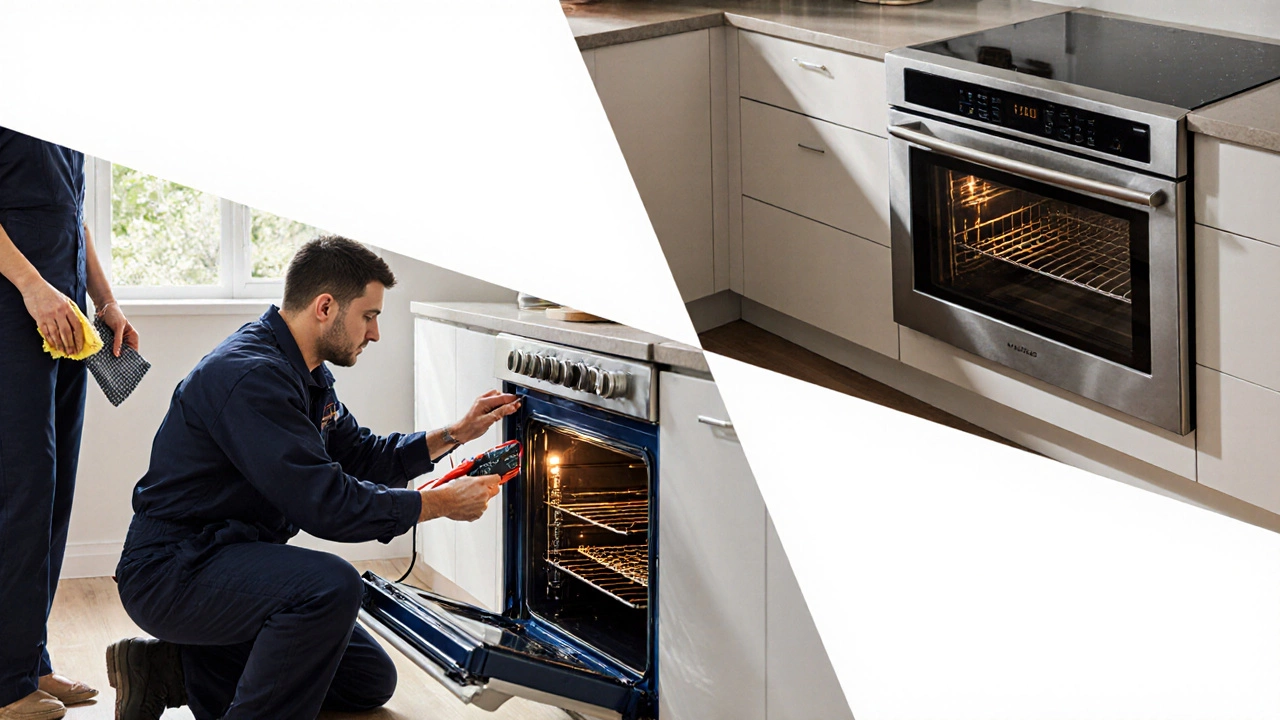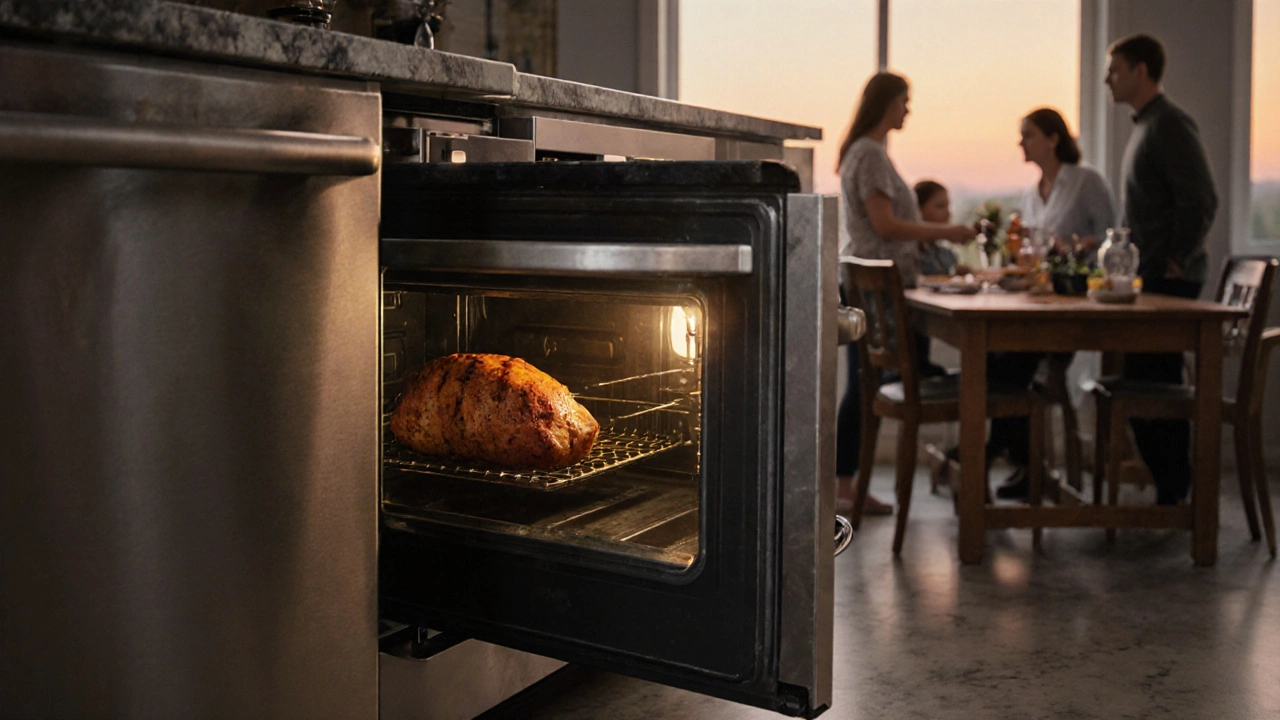Oven Lifespan Calculator
Your Oven Information
Current Condition
Results
Ever wondered why some ovens keep baking year after year while others sputter out after a few seasons? Understanding the oven lifespan helps you decide when to call a repair tech, when to tweak maintenance, and when to start budgeting for a new unit.
What Determines an Oven’s Longevity?
Several factors shape how long an oven stays reliable. First, the Oven is a kitchen appliance that uses controlled heat to bake, roast, and broil food. Its core components-heating elements, thermostats, insulation, and control boards-wear out at different rates. The quality of the original manufacturing, the frequency of use, and the local power or gas supply also play major roles.
Homeowners who run a family of five through dinner nightly will naturally push the oven harder than someone who cooks for one. Differences in power voltage, water hardness, and even the type of cookware can accelerate corrosion or cause uneven heating.
Another hidden factor is how you treat the appliance. Regular cleaning, avoiding heavy spills, and checking door seals keep the internal temperature stable, which in turn protects the heating elements and thermostat.
Typical Life Expectancy by Oven Type
Not all ovens are built the same. Below is a quick rundown of the most common categories and the years they typically last when maintained properly.
| Oven Type | Typical Lifespan | Key Wear Points |
|---|---|---|
| Electric oven uses resistive heating elements powered by electricity | 12‑15 | Heating elements, control board |
| Gas oven fires a gas burner to generate heat | 15‑20 | Burner jets, igniter, thermostat |
| Convection oven adds a fan to circulate hot air for even cooking | 10‑13 | Fan motor, heating element |
| Self‑cleaning oven reaches extreme temperatures to ash away residues | 8‑12 | Thermostat, high‑heat sensor |
These ranges come from field data collected by major appliance manufacturers and repair networks across the U.S., Europe, and Australasia. Even within a single category, premium brands often outlast budget models by a few years thanks to better insulation and higher‑grade components.
Red Flags That Your Oven Is Nearing the End
Spotting early symptoms can save you from a surprise breakdown during the holidays. Look for these warning signs:
- Uneven heating or cold spots - often a sign the heating element the metal coil that converts electricity into heat is failing.
- Temperature fluctuations - the thermostat the sensor that regulates oven temperature may be drifting out of calibration.
- Strange smells or smoke - could indicate insulation breakdown or a burnt element.
- Door not sealing properly - heat loss forces the oven to work harder, shortening component life.
- Frequent error codes on the display - often mean the control board is aging.
If you notice two or more of these issues, a professional inspection is worth the investment before a total failure.

Maintenance Habits That Extend Your Oven’s Life
Simple, regular tasks can push the average lifespan toward the top of the range.
- Wipe spills immediately. Acidic sauces can corrode enamel and metal parts.
- Run the self‑clean cycle sparingly. While convenient, the extreme heat can stress seals and sensors.
- Check door gaskets every six months. Replace cracked silicone to maintain heat efficiency.
- Calibrate the thermostat yearly. Many manufacturers provide a simple reset button or a service manual procedure.
- Schedule an annual professional tune‑up. A technician can clean the fan motor, tighten loose wiring, and test the heating element for resistance levels.
These steps cost little time but add years of dependable performance.
Repair vs. Replacement: How to Choose
When a major component fails, the cost decision often comes down to two numbers: the estimated repair price and the expected remaining life after the fix.
| Issue | Repair Cost | New Oven Price (mid‑range) |
|---|---|---|
| Heating element failure | 180‑250 | 1,200‑1,600 |
| Thermostat or sensor | 120‑180 | 1,200‑1,600 |
| Control board replacement | 350‑500 | 1,200‑1,600 |
As a rule of thumb, if repairs exceed 30% of a new unit’s price, replacement usually makes more sense. Keep an eye on the manufacturer warranty the period during which the maker covers repairs. Some warranties extend to five years on major components, which can tip the scale toward repair.

Understanding Appliance Lifespan Metrics
When you read about an appliance lifespan the average number of years a household device functions before replacement, the figure usually reflects average use conditions. Heavy‑duty commercial kitchens will see half the lifespan of a lightly used home model.
Energy‑efficiency ratings also affect wear. High‑efficiency ovens run cooler cycles, which can reduce stress on heating elements. However, some low‑energy models use more sophisticated electronics that may be prone to software glitches.
Quick Checklist: Is It Time to Replace Your Oven?
- More than ten years old and showing multiple wear signs.
- Repair costs consistently above $400 (NZD) for core components.
- Energy consumption has risen sharply compared to your utility bills.
- Frequent error codes or unreliable temperature control.
- Outdated safety features, especially for gas models.
If you tick three or more items, start researching a replacement while still budgeting for optional installation services.
FAQs
How many years does a typical oven last?
A well‑maintained electric or gas oven usually reaches 12‑15 years, while premium models can survive up to 20 years.
Does using the self‑clean feature shorten an oven’s life?
The high temperatures stress seals, thermostats, and wiring. Occasional use is fine, but frequent cycles can shave a few years off the lifespan.
What are the biggest cost drivers for oven repair?
Heating element replacement, control board swaps, and thermostat repairs are the most common and pricey fixes.
Can I extend my oven’s life by calibrating the thermostat?
Yes. Proper calibration prevents the oven from over‑working, which reduces wear on heating elements and the control board.
When should I replace a gas oven versus repairing it?
If the burner jets or igniter need replacement and the unit is over 15 years old, replacement is usually more economical.
